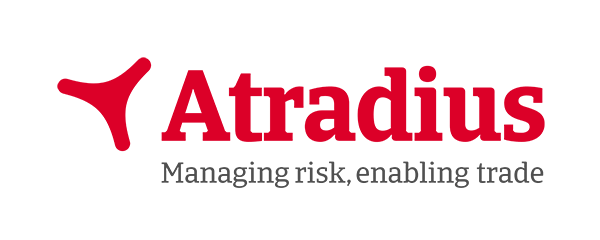

Businesses brace as borrowing costs soar
Atradius News
Soaring inflation is affecting firms' ability to secure affordable finance. In the first of two articles, we look at the causes and impact of this perfect economic storm.
In an inflationary environment, the natural tendency of central banks is to hike interest rates. This has the effect of dampening demand, but at the expense of increased costs to business. That is happening in most major global economies today.
In this article, we’ll explore the origins and impact of rising borrowing costs on business profitability. Is this a temporary situation, or are we moving towards a “new normal” of high-interest rates, low growth, and high prices? Are interest rates of 1% and lower a thing of the past?
In the second article, we’ll discuss the impact of high-cost finance on a range of business sectors, and look at the options for organisations as they redesign financing strategies in response to these new realities.
Has inflation peaked?
In terms of inflation, the current situation might be described as tough but stable. Inflation remains damagingly high in many major economies. The glimmer of good news is that in most cases it isn’t climbing any higher.
In fact, there are signs inflation may have peaked. In the UK, for example, the rate peaked at 11.1% in October 2022, before falling to 10.5% in December. In the euro area, inflation fell to an eight-month low of 8.5% in January. In the US, the 6.4% figure recorded in January represented a seventh straight month of falling prices.
Inflation is likely to fall further this year, as food, gas, and shipping costs cool. The Bank of England expects inflation to fall to a much more manageable 4% or so by the end of the year.
That’s all good news, but if inflation has peaked, it has done so from near four-decade highs. Global inflation rates will be a good deal higher at the end of 2023 than they were at the end of 2019. In the fourth quarter of the last pre-pandemic year, euro area inflation was just 1%.
What will happen to interest rates?
With inflation expected to fall, it’s reasonable to ask if interest rates will start falling soon as well. The short answer is yes, but not in the next few months. We expect that in many economies, including the US and Eurozone, rate rises will be smaller in the short-term than the significant hikes seen in 2022, and then fade.
We see that in the US, which recently raised rates by 25 basis points (bps). That’s a smaller rise than many in 2022, but it’s still a rise.
Similarly, the European Central Bank raised its main rate to 3% in February, and pledged to raise it again in March.
There are similar trends around the world. In India, the interest rate was raised to 6.5% in February, a 25 bps rise and the sixth hike in a row. Indonesia’s rate jumped to 5.75%. China is something of an outlier here, leaving its key lending rate at 3.65% in January, the fifth straight month without movement.
Central banks have a tough balancing act. Interest rate rises cool inflation but creates challenges for the underlying economy. One of those challenges is the spiraling cost of business finance.
What do interest rate rises mean for business?
Businesses need financing to cover everyday running costs, invest in new equipment and move into new markets. Borrowing is a normal tool of business strategy.
Which means that, when borrowing costs rise, there is a significant impact on the cost structure of many businesses. Rising input costs can impact their ability to operate profitably.
Businesses can often ride out economic storms if they know when they will end, but current headwinds are unpredictable. Central banks are being cautious in their forecasting, and it may take years before interest rates fall significantly in many economies.
In fact, many experts think the era of low-interest rates (1% and below) is over, certainly in the short term. Central banks tend to prefer to keep interest rates high rather than risk lowering them too soon. The threat of losing control of inflation - in a repeat of 2022 - weighs heavy on their minds
What can businesses do?
When costs rise, the obvious thing to do is to put prices up. But that is hugely risky in the current inflationary environment.
“Passing cost increases to the market, in the form of higher prices, is tightly constrained by many factors including the reduced purchasing power of customers, the elasticity of demand, and the positioning of the business in the market in relation to its competition, to name a few,” says Dimitri Pelckmans, Head of Risk Services (Belgium and Luxembourg) at Atradius.
If businesses can’t pass higher costs to customers, they have to absorb them internally or find more customers. Unfortunately, demand is subdued by all the factors mentioned above and consumer confidence is low. “This situation poses a serious threat to the capability of businesses to maintain profitability and stay afloat,” says Dimitri.
The need for finance
Businesses are meeting these challenges in a number of ways. Many are slowing production, which lowers costs but also limits profitability. Others are considering investing in more cost-efficient production processes, but rising borrowing costs have put this option out of reach for a large number of companies.
“Our observation of business behaviour suggests that the demand for long-term finance for investment has significantly weakened,” says Dimitri. “Instead, businesses have shown an increased demand for short-term finance in the last few months.”
The preference for short-term borrowing is evidence of the depth of this economic downturn. Businesses often look for quick cash injections when they are struggling to pay everyday expenses.
Taken together, these factors add up to something like a perfect storm for business, with inflation subduing demand and high interest rates creating extra financing costs for organisations already hit by rising energy and raw material prices.
How are companies coping? We’ll explore this question in more detail in our next article, and take an in depth look at the reaction of different sectors to the economic storm. As interest rates continue to rise, we’ll also look at the alternative sources of finance many businesses are turning to as they seek to cover their everyday costs.

